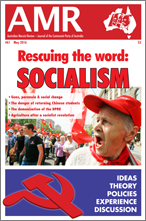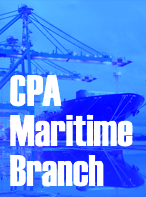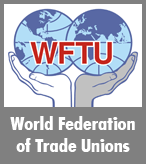Past struggles – Their significance today
Anti-union Labor-Liberal – Part 2
(Past struggles Their significance today – Part 1)
Like today, the government then – like all governments (Liberal or ALP) – was more interested in the needs of big business, in this case the mining companies. The difference between then and now was that the ALP in those days still had a mass working class base. Then the leaders of the ALP supported capitalism, even though it had thousands of radical workers and young people making up its base, but it was nowhere near as right-wing as it is today. The Chifley Labor government was quick to introduce many anti-union laws. It established the Joint Coal Board – with no union representation – and with strong powers to repress unions and their members.

The 1949 coal miners’ strike is rich in lessons for labour movement activists today. It was not only the first time that troops were used during an industrial dispute in Australia, but it highlighted the role that the ALP played in doing the dirty work for the bosses.
The Chifley government set a dangerous precedent of using troops to break strikes. Menzies followed this lead and troops were later used by the government at the waterfront dispute at Bowen in 1953. They were also used at disputes during 1951, 1952 and 1954 against seamen and waterside workers. Liberal Prime Minister Harold Holt also used the navy to try and break the Seamen’s Union of Australia in 1967. Then Liberal Prime Minister Malcolm Fraser used the RAAF to transport passengers during a Qantas dispute in 1981 and in 1989, Labor Prime Minister Bob Hawke used the air force to break the Pilots’ Federation strike.
Class betrayal
Another betrayal of the working class was when the ACTU stopped the spontaneous protests that occurred after ALP Prime Minister Gough Whitlam was sacked in 1975. This stymieing of action had the desired effect of dampening down grass roots opposition to the sacking. The election that followed saw the Coalition win and Malcolm Fraser became Prime Minister for the next eight years.
Back to the UK the National Union of Miners in 1974 helped bring down Edward Heath’s conservative government. In 1978 Nicholas Ridley, a member of the Tory Party, and the Selsdon Group – a British free-market economics pressure group – produced an internal report using as its basic principles the views of an American preacher and orator, William John Henry Boetcker:
You cannot bring about prosperity by discouraging thrift.
You cannot strengthen the weak by weakening the strong.
You cannot help little men by tearing down big men.
You cannot lift the wage earner by pulling down the wage payer.
You cannot help the poor by destroying the rich.
You cannot establish sound security on borrowed money.
You cannot further the brotherhood of man by inciting class hatred.
You cannot keep out of trouble by spending more than you earn.
You cannot build character and courage by destroying men’s initiative and independence.
And you cannot help men permanently by doing for them what they can and should do for themselves.
In Ridley’s opinion, trade union power in the UK was interfering with market forces, pushing up inflation, and the unions’ undue political power had to be curbed to restore the UK’s economy.
By 1984 in Britain, the richest seams of coal had been increasingly worked out and the remaining coal was more and more expensive to reach. The solution was mechanisation and greater efficiency per worker, making many miners redundant due to overcapacity of production. The industry was restructured between 1958 and 1967 in cooperation with the unions, with a halving of the workforce; offset by government and industry initiatives to provide alternative employment. Stabilisation occurred between 1968 and 1977, when closures were minimised with the support of the unions even though the broader economy slowed.
The accelerated contraction imposed by Thatcher after 1979 was strenuously opposed by the unions. In the post-war consensus, the majority had favoured nationalisation, strong trade unions, strong regulation, high taxes, and a generous welfare system, and this policy allowed also for closures only where agreed to by the workers, who in turn received guaranteed economic security. Consensus did not apply when closures were enforced and redundant miners had severely limited employment alternatives.
Jobs, communities
The strike was a stand by the miners to save not just their jobs but their communities. Arthur Scargill, the president of the National Union of Mineworker (NUM), was a militant trade unionist and socialist, who led the union in what proved to be one of the sharpest class battles in British history. Scargill realised that the Tory government was set in destroying both the coal industry and the NUM. He wrote in the NUM journal The Miner:
Waiting in the wings, wishing to chop us to pieces, is Yankee steel butcher MacGregor. This 70-year-old multi-millionaire import, who massacred half the steel workforce in less than three years, is almost certainly brought in to wield the axe on pits. It’s now or never for Britain’s mineworkers. This is the final chance – while we still have the strength – to save our industry.
At what is now called the Battle of Orgreave approximately 8,000 pickets faced 5,000 police officers in what many regard as the most violent confrontation in the year-long strike. Campaigners reported that some of the thousands of officers drafted in to police the picketing used excessive violence – and that this was followed by the fabrication of accounts during the subsequent investigation. It led to 95 people being charged with riot and violent disorders but their cases were dropped amid questions about the reliability of police evidence. To this day no-one has learnt the truth, but acknowledge the physical and mental pain the mining community went through in 1984: a pain still tangible today.

Patrick dispute
And now back to Australia. No-one can forget the fiasco which was the Patricks Wharf dispute, 20 years ago, in 1998. The Australian waterfront dispute was an event in Australian industrial relations history, in which Patrick stevedores undertook a restructuring of their operations for the purpose of dismissing their workforce. The restructuring by Patrick was later ruled illegal by Australian courts. The dispute involved Patrick terminating the employment of its workforce and locking the workers out of the workplace, the overwhelming number who were members of the Maritime Union of Australia. The resulting dismissal and lock-out of their unionised workforce was supported and backed by the then Australian Liberal/National Coalition government of John Howard in an attempt to wipe the union off the waterfront.
The dispute was a conspiracy by the Australian government, Patrick Stevedoring and the National Farmers Federation. This conspiracy began in Cairns, Queensland in September 1997, when International Purveyors, a stevedoring company, bypassed MUA labour. Cairns was seen as a weak link in the union, as at that time only seven MUA members had permanent work there, with 29 casuals. But the workers stood firm and set up pickets.
The MUA had the support of the International Transport Federation (ITF), which implemented a ban on a ship, the Java Sea, from docking at Cairns. This international action bypassed the secondary boycott provisions meant to prevent solidarity action by other unions. The employer relented and an agreement was reached for MUA labour to load the ship when it arrived. The first blow had been struck. The war on the waterfront had commenced but the union had countered successfully, to the surprise of many.
Dubai-trained scabs
Then in December 1997, the MUA revealed that non-union labour – mostly former military personnel and ex-police – was being sent to Dubai to train as wharfies. The ITF threatened to blockade Dubai and the exercise was abandoned ... for the time being. The second counter punch had been landed, but the dispute had intensified.
Thirdly, executives of the National Farmers’ Federation set up companies including Producers & Consumers Stevedore Pty Ltd, to employ and train non-union labour at Webb Dock, Melbourne. This was portrayed as a training exercise, but was soon followed on January 28, 1998, by Patricks Stevedores locking out 180 wharfies from Webb Dock.
Significantly, Bill Kelty, the secretary of the ACTU at the time, had warned the government that if it were to take on the wharfies, they would see the biggest picket lines in Australian history.
The whole fiasco was for the sake of economic rationalisation – though that wasn’t mentioned at the time. The aim was to reduce wages, conditions, and union power in a strategic industry through the introduction of non-union contract labour. This would pave the way for reduced wages and conditions across the entire workforce and hasten the demise of trade unionism in Australia. Patrick hoped to dramatically increase the price of its shares. For the farmers it was supposed to mean lower costs.
Patrick CEO Chris Corrigan himself later referred to the dispute as a conspiracy when he said that the dispute was an attempt to emulate what Rupert Murdoch had done to the print union workers in Fleet Street in London by setting up an alternative workforce of scab labour at Wapping.
The MUA succeeded in holding on against the aims of the government to get rid of the union, but its legal strategy was at best brinkmanship and never guaranteed success. The union won the legal battle because of the power of the demonstrations by members of the wider community in favour of the MUA in Sydney and Melbourne and the quality of the intelligence that was fed to it. Nevertheless, the conservative nature of the judges, the financial cost, and the ultimate wearing down of the rank-and-file support made a legal strategy high risk.
This year another ugly dispute has reared its head with DP World and Hutchinson Ports trying to force enterprise agreements on the workforce which are totally unacceptable to the MUA, as they encroach on worker’s current entitlements. The struggle continues.
There is always contention between capital and labour due to different attitudes and values. The only strength available to workers is in their numbers and their power to withdraw their labour.
Longford Dispute
The town of Longford, near Sale in East Gippsland, Victoria, is home to Esso Longford Gas Plant; which has been the flashpoint for an ongoing dispute that has now lasted (as of writing) for 596 days. A picket line which looks to become the longest ongoing union battle in recent memory occurred after maintenance workers refused to sign a new workplace agreement with Esso maintenance subcontractor UGL.
Esso, who are really Exxon/Mobil, are using the maintenance contractor UGL to carry out a frontal assault on the workers’ wages and conditions. UGL used a handful of WA workers to sign an enterprise agreement and attempted to force it on the rest of the workforce. An Esso spokesman maintains the dispute is between the maintenance contractor UGL and the unions, and has “encouraged” both sides to resolve the issue.
However, it is obviously a strategic underhanded move to undermine the current workforce conditions. UGL sacked workers at Longford in June 2017, then offered their jobs back at 40 percent less pay with massive changes to their conditions. The “sham” agreement is an anti-worker, anti-union, anti-family insult to the Longford workers – members of the ETU, AMWU and AWU – who have been locked out of their site and been negotiating with Esso ever since.
Interesting at this point is the fact that Exxon/Mobil has paid no tax to Australia since 2013, and isn’t due to pay any until 2021.
This dispute could match the MUA dispute of 1998 at this rate, with the issues facing workers all over Australia bound up in it. Workers are also up against foul industrial relations laws handed down by the ALP, after the battle that was fought to get rid of the Howard government anti-union WorkChoices legislation. Workers can see corporations and politicians – from both parties – doing deals which see wealth – which should be underpinning their health services, schools and university courses – flowing off-shore and into tax havens belonging to the super-rich, while successive governments keep attempting to reduce their taxes (while most of them pay no tax anyway).
Meanwhile, those same corporations pump out emissions, poison waterways and pollute both the air we breathe and the seas. Our political parties keep privatisating our essential energy resources costs of which keep going up keeping workers and farmers under constantly rising utility bills.
The industrial relations laws are broken. The rank and file workers at Longford who have been in dispute with UGL (and Esso) for so long to have almost earned their place in the history books.
The Union Movement in 2019
In Australia, economic rationalism has dominated our political system and economy since the defeat of the Whitlam government in 1975. Both Labor and Liberal/National governments have subscribed to the philosophy of the free market, and overseen the deregulation of the labour market. This is really “re-regulation” – with institutions like the Australian Competition and Consumer Commission promoting free trade while saying that it is looking after the interests of everybody by prosecuting cartels.
Twenty years of failure to create jobs, address growing environmental degradation, increasing insecurity at many levels, and fear of crises have brought economic rationalism into question. However, the protagonists simply say it is not working because there are still impediments to competition, such as the trade unions. They blame the unions and the workers for today’s recession.
What comparisons can we make between the past struggles and those currently unfolding? Today the working classes are demanding secure jobs because, increasingly, employers have been casualising the workforce; eliminating sick pay and holiday pay; reducing wages and attempting to exploit workers by destroying the rights that had steadily been fought for since the industrial revolution. As Marx so rightly observed:
‘Buy cheap, sell dear.’ How do you like it? ‘Buy cheap, sell dear.’ Buy the working man’s labour cheaply and sell back to that very working man the produce of his own labour dear! The principle of inherent loss is in the bargain. The employer buys the labour cheap he sells, and on the sale he must make a profit; he sells to the working man himself and thus every bargain between employer and the employed is a deliberate cheat on the part of the employer. Thus labour has to sink through eternal loss that capital may rise through lasting fraud.
Buying the worker’s labour cheaply is, according to Marxist economics, the surplus labour which is uncompensated (unpaid) labour i.e. the first few hours of work done costs the employer, after that comes the surplus labour which is the ultimate source of capitalist profits. Now, employers are attempting to claw back the benefits which have been demanded, fought for, and won in order to give workers a better life. A line in the sand has been drawn!
Class collaboration
Since Hawke and Keating, the ALP has been kowtowing to the employers to see what the bosses will tolerate, whereas in the UK, Jeremy Corbyn advocates on behalf of the working class. He has struck a chord suggesting far-reaching and bold industrial policy to overcome decades of neo-liberal policy. He preaches nationalisation and rebalancing the economy in the interests of workers and the poor.
So how can socialism return to destroy the neo-liberalism influence rife today? Nearly 480,000 Enterprise Bargaining Agreements have been stripped from workplaces since 2013, pushing workers back onto minimum awards. Today the Change the Rules Campaign of the ACTU is demanding:
- Give people the choice of converting from casual to permanent if they work regular hours.
- End labour hire and sham contracting rip-offs.
- Stop exploitation of temporary visa workers.
- Stop allowing employers to terminate workplace agreements.
- Equal rights for people working in the “gig” economy.
- Investment in apprenticeships and vocational training.
- Governments to procure from local businesses first to create local jobs.
The only hope for any restructuring of the industrial relations environment are strong demonstrations by workers, including withdrawal of their labour, supported by their unions. A lesson to be learnt from history is the power of the workers when supported by their Unions in a dispute. But the trade union movement must have its own political voice. Pandering to what used to be the party of the workers – the Labor Party – has proved disastrous.
Eileen Whitehead is a member of the Perth Branch, CPA.













